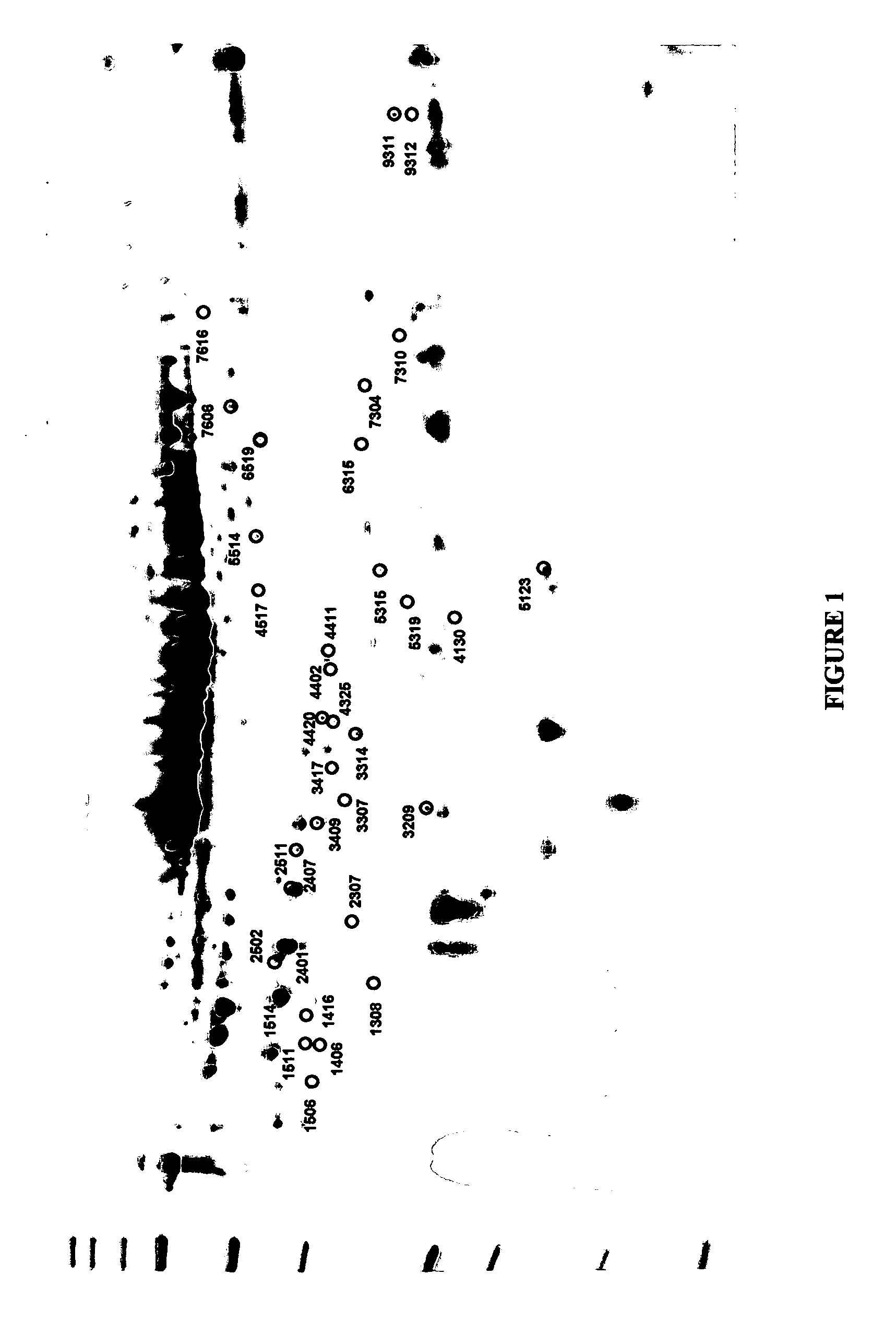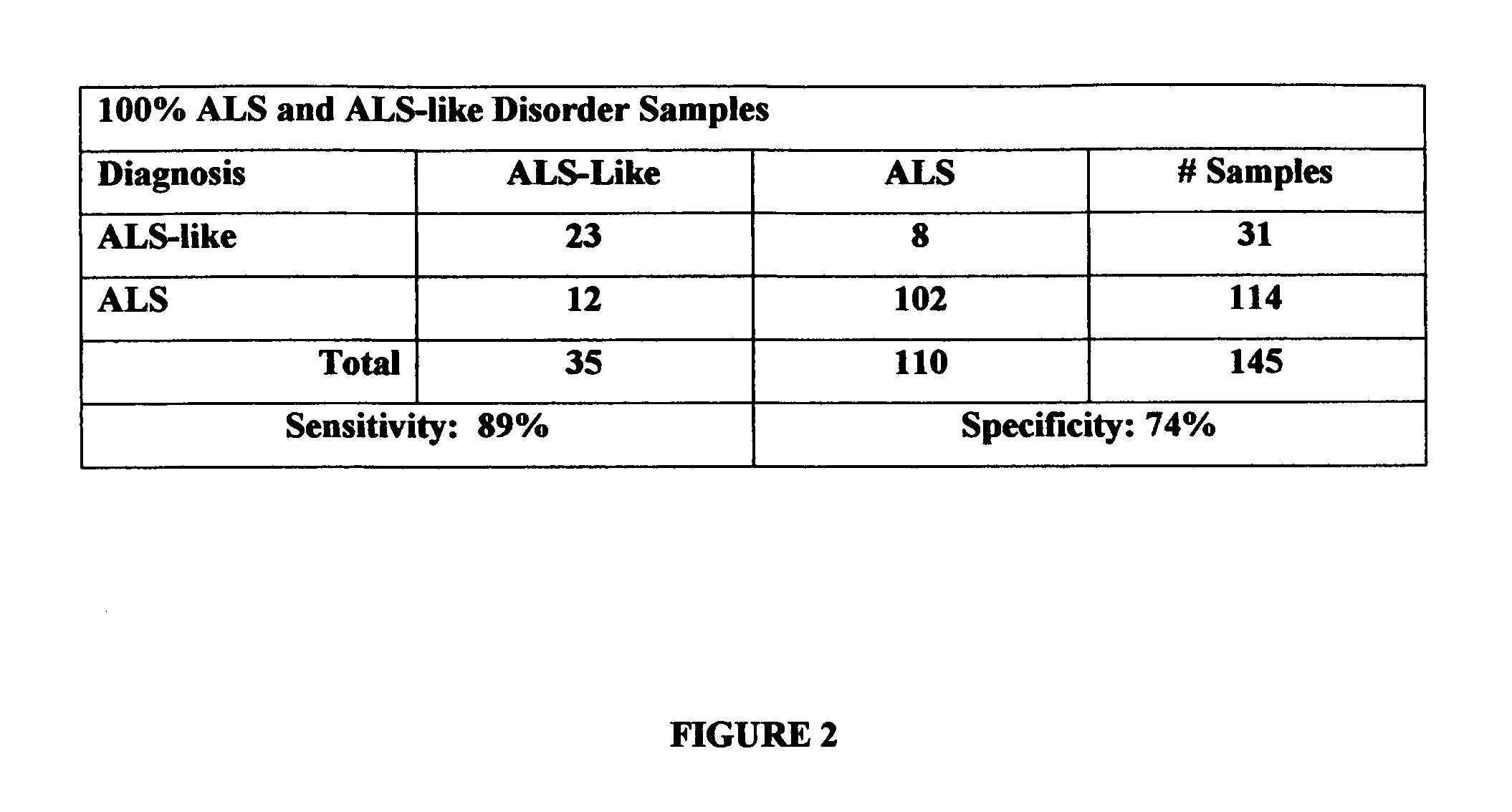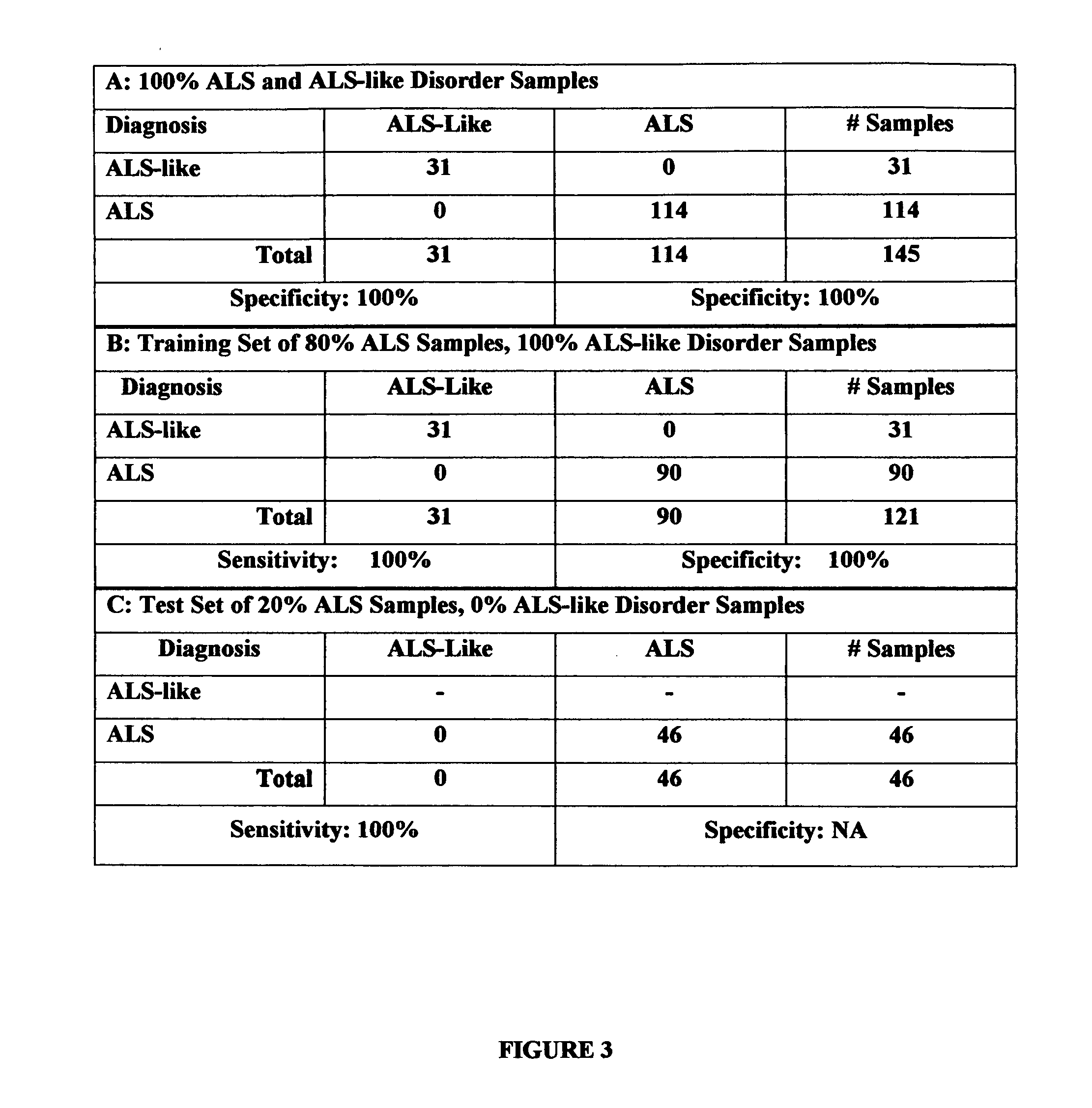Assay for ALS and ALS-like disorders
a technology for applied in the field of als and alslike disorders, can solve the problems of not having a single test that can provide diagnostic certainty, genetic testing will not detect the majority of als cases, and clinicians find them to be somewhat cumbersom
- Summary
- Abstract
- Description
- Claims
- Application Information
AI Technical Summary
Problems solved by technology
Method used
Image
Examples
Embodiment Construction
[0022] The present invention is a diagnostic test for differentiating individuals with amyotrophic lateral sclerosis (ALS) patients and patients with ALS-like disorders that express symptoms like ALS. The method is based on the use of 2-dimensional (2D) gel electrophoresis to separate the complex mixture of proteins found in blood serum and the quantitation of a group of identified biomarkers to differentiate patients having ALS from patients having other ALS-like disorders.
[0023] In the context of the present invention a “neuromuscular disease” is a condition wherein an individual or patient exhibits a known set of symptoms such as limb weakness, slurred speech, muscle twitching or cramping, and / or swallowing difficulty. Neuromuscular diseases include, but not be limited to amyotrophic lateral sclerosis (ALS, also known as Lou Gehrig's disease), ALS-like diseases, Parkinson's disease (PD), and PD-like diseases.
[0024] In the context of the present invention an “ALS-like disorder” ...
PUM
| Property | Measurement | Unit |
|---|---|---|
| Fraction | aaaaa | aaaaa |
| Concentration | aaaaa | aaaaa |
Abstract
Description
Claims
Application Information
 Login to View More
Login to View More - R&D
- Intellectual Property
- Life Sciences
- Materials
- Tech Scout
- Unparalleled Data Quality
- Higher Quality Content
- 60% Fewer Hallucinations
Browse by: Latest US Patents, China's latest patents, Technical Efficacy Thesaurus, Application Domain, Technology Topic, Popular Technical Reports.
© 2025 PatSnap. All rights reserved.Legal|Privacy policy|Modern Slavery Act Transparency Statement|Sitemap|About US| Contact US: help@patsnap.com



